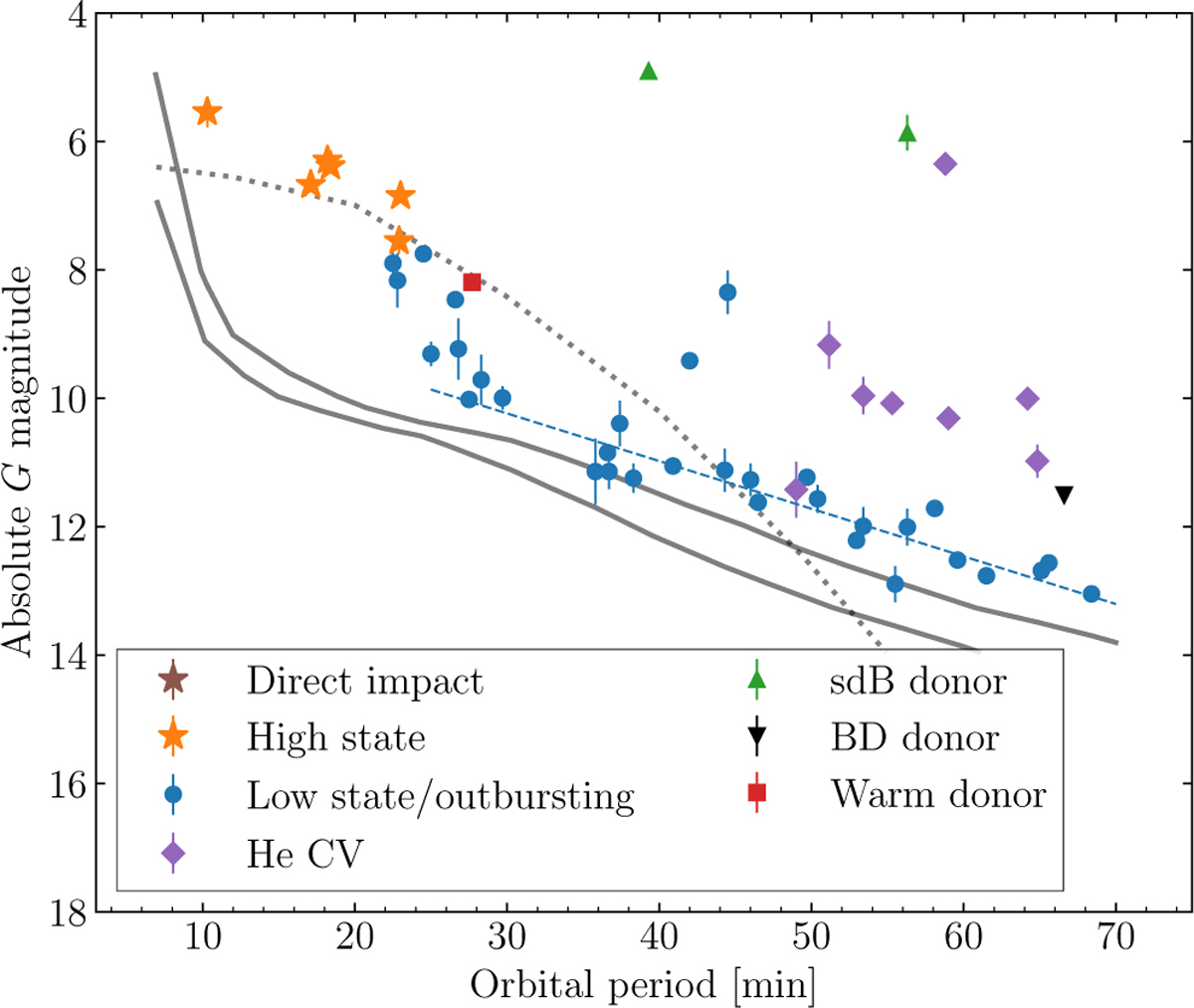Fig. 9

Download original image
Absolute magnitudes of targets in this catalogue as a function of orbital period. We have only included targets for which the Gaia parallax is detected with 5σ confidence. The grey solid lines show the white dwarf magnitudes predicted by Bildsten et al. (2006) for white dwarf donors of two different levels of initial entropy, and the grey dotted line shows the accretion disc magnitude predicted by Nelemans et al. (2004). AMCVn-type systems in the low state follow an approximately linear relationship with orbital period (fitted by the blue dashed line). Other types of systems are generally brighter, due to extra light from the donor star and/or the accretion disc. As was previously discussed by Ramsay et al. (2018), even low-state systems at long orbital periods are systematically brighter than the model predictions.
Current usage metrics show cumulative count of Article Views (full-text article views including HTML views, PDF and ePub downloads, according to the available data) and Abstracts Views on Vision4Press platform.
Data correspond to usage on the plateform after 2015. The current usage metrics is available 48-96 hours after online publication and is updated daily on week days.
Initial download of the metrics may take a while.


